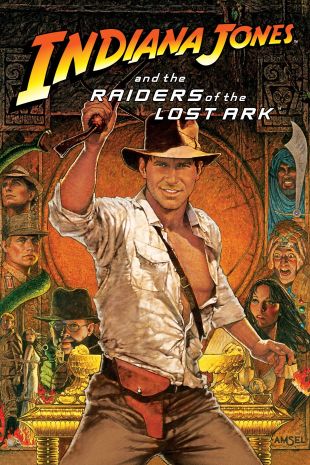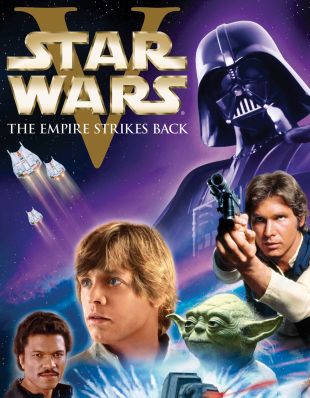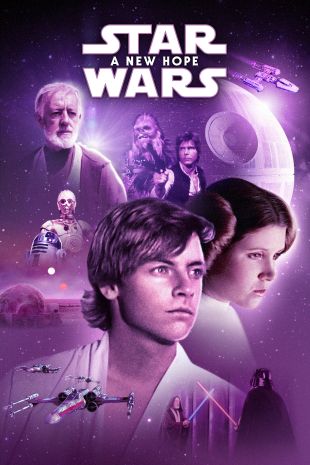Along with his friend and occasional collaborator Steven Spielberg, George Lucas was the key figure behind the American film industry's evolution (or, according to most critics, de-evolution) from cinema to spectacle during the late '70s. The mastermind behind two of the most lucrative franchises in history -- Star Wars and the Indiana Jones features, respectively -- Lucas redefined the concept of the Hollywood motion picture, shifting the focus of film away from acting and personal storytelling to special effects, production design, and rapid-fire action. Remaining at all times on the cutting edge of merchandising and technology, he forever altered the ways in which movies are perceived by audiences and studios alike.
Born May 14, 1944, in Modesto, CA, George Walton Lucas Jr.'s first love was not filmmaking, but auto racing. Only a serious wreck forced him out of the sport, and he eventually enrolled in the University of Southern California's famed film school program. There his experimental short subject THX 1138 won a number of awards and helped earn him an internship at Warner Bros. studios, where he worked as a production assistant on fellow U.S.C. alum Francis Ford Coppola's 1969 effort The Rain People. After working on the Al and David Maysles brothers' 1970 Rolling Stones documentary Gimme Shelter, Lucas (with Coppola's financial assistance) mounted a feature-length remake of THX 1138. The end result, starring Robert Duvall, won rave reviews, and swiftly established itself as a major cult favorite.
The success of THX 1138 brought Lucas to the attention of Universal Studios, which agreed to finance 1973's nostalgic American Graffiti, a superb reminiscence on early-'60s America which launched the motion-picture careers of talents including Richard Dreyfuss, Ron Howard, and Harrison Ford. Even more important was the film's soundtrack, a collection of vintage rock & roll hits which became an immediate best-seller and established the formula for movie soundtracks for decades to come. Shot on a miniscule budget, American Graffiti grossed over 145 million dollars, and earned a number of Academy Award nominations including nods for Best Picture and Best Original Screenplay. Suddenly, Lucas was a major Hollywood player, and he was given much greater latitude and support in developing his next project. That next project proved to be 1977's Star Wars, one of the most important and successful films in Hollywood history. A space opera inspired by the writings of Joseph Campbell (as well as, in no small part, Akira Kurosawa's The Hidden Fortress), it incorporated elements of mythology and religion to create a self-contained universe populated by larger-than-life characters in extraordinary situations, all achieved with the latest in cutting-edge technology. Made for just under ten million dollars, Star Wars grossed over 400 million dollars globally on just its initial run alone, creating a cottage industry of toys, comic books, and other collectibles and establishing science fiction as Hollywood's dominant genre.
The overwhelming success of Star Wars did more than simply alter the kinds of films the studios looked to produce, however; it also forever changed the way films were made. The most notable aspect of the picture's storytelling was its breakneck pacing, edited by Lucas himself in tandem with his wife. Seemingly no film had ever moved so quickly, and its overwhelming success proved not only that a generation weaned on the rapid pace of television could easily absorb such an onslaught of image and sound, but that this was the kind of narrative they wanted to see on a regular basis. Studios scrambled to develop their own sci-fi projects, while Lucas himself turned to studying the pioneering special effects work of innovators like Willis O'Brien and Linwood Dunn, ultimately establishing his own F/X company, Industrial Light and Magic, to assist other filmmakers and technicians in creating the most accomplished visuals possible. The work of the Industrial Light and Magic team quickly became the industry standard, constantly remaining two or three steps ahead of their competition by applying the latest technological advances to manufacture seamless visual effects. Eventually, they became among the very first to work with computer graphics. Lucas also established Skywalker Sound, a state-of-the-art post-production audio facility which later developed THX, a means of creating new levels of sophistication in motion-picture soundtracks.
Given the flurry of activity that followed in the wake of Star Wars, Lucas opted not to direct his screenplay for the film's inevitable sequel, 1980's The Empire Strikes Back, instead handing the reins over to Irvin Kershner. Widely considered the best of the Star Wars films, it was another massive hit, with a cliffhanger ending which left audiences dangling in suspense waiting for the third part of the trilogy. However, Lucas' next project, which he worked on with director Steven Spielberg, was the screenplay for 1981's Raiders of the Lost Ark, an adventure inspired by the old-time movie serials. Starring Harrison Ford as the renowned archaeologist Indiana Jones, Raiders was another blockbuster, later inspiring two sequels, 1984's Indiana Jones and the Temple of Doom and 1989's Indiana Jones and the Last Crusade, as well as a short-lived television series, The Young Indiana Jones Chronicles. Now working almost exclusively in the capacity of executive producer, Lucas wrapped up the Star Wars trilogy in 1983 with Return of the Jedi. His next major project was also his first unmitigated disaster: 1986's Howard the Duck. Based on a cult hit from Marvel Comics, the film was both a critical and commercial bomb, while 1988's sword-and-sorcery epic Willow failed to fare much better. In 1997, he reissued the Star Wars trilogy in theaters with additional footage and newly revised special effects, all to massive box-office success. Finally, that summer he also began pre-production on the first of the hotly anticipated new Star Wars features. The first of the new trilogy, Star Wars: Episode I-The Phantom Menace, opened in May of 1999. Despite an almost unprecedented degree of marketing, rumor, and advance ticket sales, the film failed to live up to the colossal expectations that industry and media observers placed upon it. In addition to receiving unenthusiastic reviews and weak word-of-mouth, it also didn't surpass Titanic's box-office record, as many had expected it would. However, The Phantom Menace still proved to be a very profitable affair, grossing well over 400 million dollars, and legions of Lucas fans came out of theaters already impatient for the trilogy's next installment. Though Star Wars, Episode II: Attack of the Clones was greeted with largely negative reviews by critics, longtime fans of the series nevertheless costumed-up and assembled en masse in front of multiplexes nationwide in anticipation for the next chapter in Anakin Skywalker's continuing fall to the dark side. Generally considered an improvement over the previous installment by fans, the film also made film history in being the first feature to be digitally shot and projected in theaters, prompting many to mark the days of celluloid entertainment in the traditional sense. Though it had strong adversarial competition in the form of everyone's favorite web-slinging superhero Spider-Man, Attack of the Clones still managed to make a splash at the box-office. The next installment, in the saga, 2005's Star Wars: Episode III - Revenge of the Sith - fared even better critically and commercially, and brought the saga full circle, ending where 1977's Episode IV: A New Hope begain.
In the years that followed, Lucas turned up as participant in a number of documentaries, such as The Pixar Story and Hugh Hefner: Playboy, Activist and Rebel. He then joined forces with longtime friend and collaborator Steven Spielberg for 2008's sequel Indiana Jones and the Kingdom of the Crystal Skull, executive produced the same year's television series Star Wars: The Clone Wars, and then in 2012 executive produced the period drama Red Tails, on the experiences of the Tuskegee Airmen - directed by first-timer Anthony Hemingway. He also served as the executive producer for the 2012 film Red Tails.



